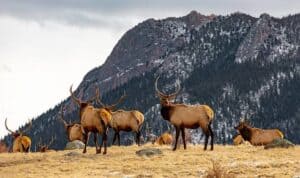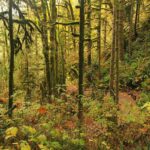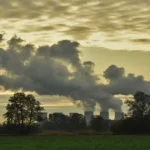The Significance of Wildlife Conservation lies at the heart of maintaining the delicate balance of our planet’s ecosystems. As human activities continue to impact natural habitats, the preservation of wildlife becomes imperative.
This preservation goes beyond the intrinsic value of individual species; it safeguards the very foundation of life on Earth.
Wildlife plays a multifaceted role in ecological stability, supporting biodiversity, contributing to medicinal discoveries, and fostering the delicate equilibrium that sustains diverse ecosystems.
Beyond its ecological importance, wildlife conservation carries economic, cultural, and ethical dimensions, underscoring its global relevance. Recognizing and addressing the importance of wildlife conservation is essential for a harmonious coexistence between humans and the natural world.

What is Wildlife Conservation
Creatures in their natural habitat are known as wild animals, in today’s modern world these creatures are termed as “wildlife”.
Examples of wildlife include foxes, eagles, bulls, bears, crocodiles, wild sheep, wild cats, mountain goats, and more. Wildlife resides in various places such as deserts, forests, rainforests, plains, and grasslands.
Wildlife conservation refers to the concerted efforts aimed at preserving and protecting the diverse flora and fauna inhabiting our planet.
It includes raising awareness about the significance of wildlife among people, fostering a sense of responsibility towards the protection of diverse species and their habitats.
It involves strategies to ensure the sustainable existence of various species and their habitats amidst increasing human activities, habitat destruction, and climate change.
The core objective is to maintain the delicate balance of ecosystems, recognizing the interconnectedness of all living organisms.
Wildlife conservation encompasses measures such as habitat restoration, captive breeding programs, anti-poaching initiatives, and public awareness campaigns.
By focusing on the conservation of biodiversity, this practice not only safeguards individual species but also sustains the intricate web of life on Earth.
It is a global endeavor that demands collaboration between governments, communities, and individuals to secure a future where wildlife thrives, contributing to the overall health and resilience of our planet.
Significance of Wildlife Conservation
Wildlife conservation is important, it helps the environment and humans in several ways these include:
Ecological Importance
Wildlife plays a crucial role in maintaining the ecological balance of ecosystems. Various species contribute to nutrient cycling, pollination, and seed dispersal, supporting the health of diverse habitats.
For instance, bees facilitate plant reproduction through pollination, while decomposers like fungi break down organic matter. This intricate web of relationships ensures the sustainability of ecosystems, promoting overall environmental health.
Helps Preserve Biodiversity
Wildlife conservation is instrumental in preserving biodiversity by safeguarding a variety of species and their habitats. Biodiversity ensures resilience against environmental changes, enhancing ecosystem stability.
Each species, from microscopic organisms to apex predators, contributes to the intricate web of life. Protecting this diversity is crucial for ecosystem services, such as water purification, disease control, and climate regulation, which are vital for human survival.
Also Read: Different Types of Natural Vegetation
Medicinal Significance
Wildlife holds medicinal value, with many plant and animal species providing compounds used in traditional medicine. The discovery of pharmaceuticals, such as antibiotics and anti-cancer drugs, often stems from the study of wildlife.
Conserving these species is essential for maintaining a rich source of potential medical treatments and ensuring sustainable access to natural remedies.
Wildlife Helps Ecosystems Stay in Balance
Wildlife, particularly predators, plays a key role in controlling the population of prey species, preventing overgrazing and maintaining a balance in ecosystems.
For example, wolves help regulate the populations of herbivores, preventing damage to vegetation and promoting overall ecosystem health. This balance is crucial for the survival of various species and the functioning of ecosystems.
Economic Importance
Wildlife conservation has economic implications, contributing to sectors such as tourism and agriculture. Many regions rely on the allure of diverse ecosystems and wildlife for tourism, attracting visitors and generating revenue.
Additionally, preserving biodiversity supports agriculture by ensuring the availability of pollinators and natural pest control, enhancing crop yields and food security.
Habitat Conservation
Wildlife conservation involves preserving natural habitats, safeguarding the homes of various species. This includes efforts to combat deforestation, protect wetlands, and maintain untouched wilderness areas.
Habitat conservation is vital for preventing species extinction, as disruptions to habitats often lead to population declines and loss of biodiversity.
Benefits to Humans
Wildlife conservation directly benefits humans by providing ecosystem services essential for life. Forests and oceans, rich in biodiversity, contribute to air and water purification, regulate climate, and offer resources for agriculture and industry.
Preserving wildlife ensures the availability of these services, promoting a sustainable environment that supports human well-being.
Cultural Importance of Wildlife
Wildlife holds cultural significance for many communities, forming an integral part of their traditions, stories, and identity. Species often symbolize values, serve as totems, or play essential roles in rituals.
The preservation of wildlife is crucial for maintaining cultural diversity and ensuring that future generations can continue to draw inspiration from and connect with their natural heritage.
Steps to Promote Wildlife Conservation
Promoting wildlife conservation involves several steps to safeguard the natural world these steps include:
- Governments framed laws across countries to restrict animal hunting.
- Immediate actions are taken against anyone attempting unauthorized hunting.
- Natural sanctuaries are established to preserve habitats for future generations.
- Natural parks and sanctuaries provide breeding habitats for endangered species to promote their survival.
- Wildlife conservation protects natural habitats from pollution and other human activities.
- Governments in many countries prohibit industrial work near forests to prevent environmental damage.
- Various organizations promote reduced meat-eating for both animal welfare and human health.
- Governments implement restrictions or bans on hunting to support wildlife conservation.
- Severe fines are imposed on individuals hunting without permission.
Wildlife Sanctuaries
In the preservation of wildlife, wildlife sanctuaries play an important role nationally and internationally. Wildlife sanctuaries offer a home for animals to breed effortlessly, safeguarding the Earth’s natural surroundings.
Endangered species such as giant pandas, tigers, whooping cranes, Asian elephants, and others reside in these sanctuaries, allowing them to thrive in their habitats and reproduce without difficulty.
In India there are many wildlife sanctuaries for conserving precious wildlife these sanctuaries include:
- Kaziranga National Park, Assam
- Jim Corbett National Park
- Ranthambore National Park, Rajasthan
- Sariska Tiger Reserve
- Bandhavgarh National Park
- Sundarbans National Park, West Bengal
- Sariska Tiger Reserve, Rajasthan
- Kanha National Park, Madhya Pradesh
- Periyar Wildlife Sanctuary, Kerala
- Gir National Park, Gujarat
There are also wildlife sanctuaries in the world these include:
Lone Pine Koala Sanctuary, Australia
Lone Pine Koala Sanctuary is preserving kangaroos, wombats, birds and possums, Kola, and birds.
Sloth Sanctuary, Costa Rica
The Sloth Sanctuary in Cahuita has created a unique conservation habitat specifically designed to safeguard these joyful creatures from endangerment.
Sepilok Orangutan Sanctuary, Borneo
The main goal of the center is to rehabilitate and offer a secure refuge for orphaned and injured orangutans, these are the planet’s most endangered primates.
Noah’s Ark, USA
Noah’s Ark has 38 animal spaces, and they’re home to over 100 types of creatures. The residents range from Bengal tigers and American black bears to mustangs, bison, porcupines, sulcata tortoises, silver foxes, llamas, and ostriches.
Conclusion
The significance of wildlife conservation is deeply woven into the fabric of our existence, extending beyond the protection of individual species. It encapsulates a fundamental truth — the interdependence of all living organisms.
Preserving wildlife ensures the resilience of ecosystems, maintaining the delicate balance essential for life on Earth. From regulating climate to supporting agriculture, wildlife plays a pivotal role in providing ecosystem services crucial for human survival.
Moreover, it holds cultural importance, shaping the identities and traditions of diverse communities.
As we recognize the economic contributions of wildlife to tourism and medicine, we must acknowledge that conservation is not merely an environmental concern but a holistic effort to sustain our planet’s health, cultural diversity, and the well-being of future generations.
Embracing the wildlife significance is a shared responsibility for a harmonious coexistence with the natural world.






